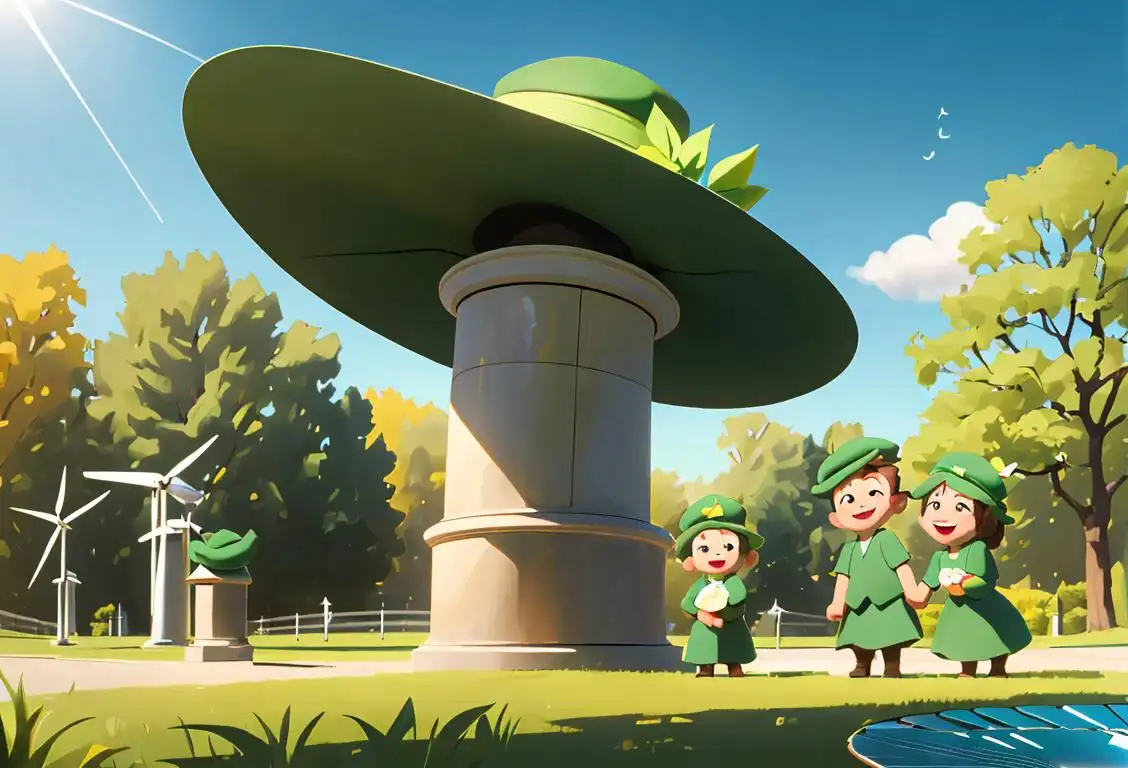National Hydrogen And Fuel Cell Day

Welcome to the fascinating world of National Hydrogen and Fuel Cell Day! Prepare to be energized as we take a closer look at this innovative and exciting day dedicated to the power of hydrogen and fuel cells.
When is Hydrogen And Fuel Cell Day?
It's national hydrogen and fuel cell day on the 8th October.
The Origins of National Hydrogen and Fuel Cell Day
Let's dive into the internet history and national significance of this electrifying day. National Hydrogen and Fuel Cell Day was officially recognized in 2015 by the U.S. Senate to raise awareness about the benefits of hydrogen and fuel cell technologies. It was established to celebrate the potential of these sustainable energy sources in creating a greener and more efficient future. Since then, it has become an annual tradition to commemorate the remarkable progress and potential impact of hydrogen and fuel cells in various industries around the world.
Why October 8th?
The date of October 8th was specifically chosen to honor the importance of hydrogen's atomic weight, which is 1.008 atomic mass units. By celebrating on this date, National Hydrogen and Fuel Cell Day serves as a clever reminder of the remarkable properties and potential of hydrogen as a clean energy source.
Exploring the Wonders of Hydrogen and Fuel Cells
Hydrogen and fuel cell technologies boast a wide range of applications and benefits. From powering vehicles to providing renewable energy for homes and businesses, these innovations have the power to revolutionize our world. Fuel cells, in particular, generate electricity through an electrochemical process, producing only water as a byproduct. It's an eco-friendly solution that offers a promising alternative to traditional energy sources.
Join the Celebration and Spread the Word!
National Hydrogen and Fuel Cell Day is not only a time to appreciate the incredible advancements in clean energy but also an opportunity to raise awareness and promote further research and development. By spreading the word about hydrogen and fuel cell technologies, we can inspire others to embrace sustainable energy solutions and work towards a brighter future.
History behind the term 'Hydrogen And Fuel Cell'
1766
Discovery of Hydrogen Gas
In 1766, the term 'hydrogen' was first used by the English chemist and physicist Henry Cavendish. He discovered this unique gas while experimenting with different chemical reactions. Cavendish named the gas 'flammable air' due to its highly flammable nature. Little did he know that this discovery would pave the way for the development of fuel cells in the future.
1839
First Observation of the Fuel Cell Effect
The first observation of the fuel cell effect occurred in 1839 when Sir William Grove, a Welsh physicist, conducted experiments using electrolysis. Grove noticed that when he applied an electric current to water, the process produced both hydrogen and oxygen gases. Intrigued by this phenomenon, he reversed the process and found that combining hydrogen and oxygen would generate an electric current. This marked the initial understanding of electrochemical reactions for power generation, and it laid the foundation for further advancements in fuel cell technology.
1843
Grove's Gaseous Battery
In 1843, Sir William Grove developed the first practical fuel cell, which he called the 'Grove's Gaseous Battery.' This fuel cell consisted of separate hydrogen and oxygen gas chambers with a porous barrier in between, known as a diaphragm. The hydrogen gas would react with the oxygen gas through an electrochemical process, producing water vapor as a byproduct and generating an electric current. Although this early fuel cell was relatively inefficient, it showcased the immense potential of this technology for clean and sustainable energy.
1959
NASA's Use of Fuel Cells
Fuel cell technology gained prominence in 1959 when NASA started using them to power spacecraft. These fuel cells provided a reliable and efficient source of electricity for various space missions. The most notable example is the Apollo space program where fuel cells powered the Command and Lunar Modules during the missions to the Moon. This adoption by NASA propelled the development and refinement of fuel cell systems for terrestrial applications as well.
1991
Commercialization of Fuel Cells
The commercialization of fuel cells began in 1991 when the world's first fuel cell-powered automobile, the 'Nissan X-Trail FCV,' was unveiled in Japan. This marked a significant milestone in the history of fuel cells, demonstrating their potential as an alternative to traditional internal combustion engines. Since then, numerous advancements have been made to enhance the efficiency, durability, and affordability of fuel cells, driving their widespread adoption in various industries, including transportation and stationary power generation.
Did you know?
Did you know? Hydrogen, the lightest and most abundant element in the universe, has the potential to fuel cars, power homes, and even propel rockets into space!Tagged
awareness technology environment energyFirst identified
30th September 2015Most mentioned on
8th October 2015Total mentions
786Other days
Geothermal Day
Hydrogen And Fuel Cell Day
Fracking Action Day
Renewable Energy Day
Battery Day
Alternative Fuel Vehicle Day
Hydrogen Day
Renewable Energy Target Has Passed The Senatea Sad Day
Tree Planting Day
Tree Day








